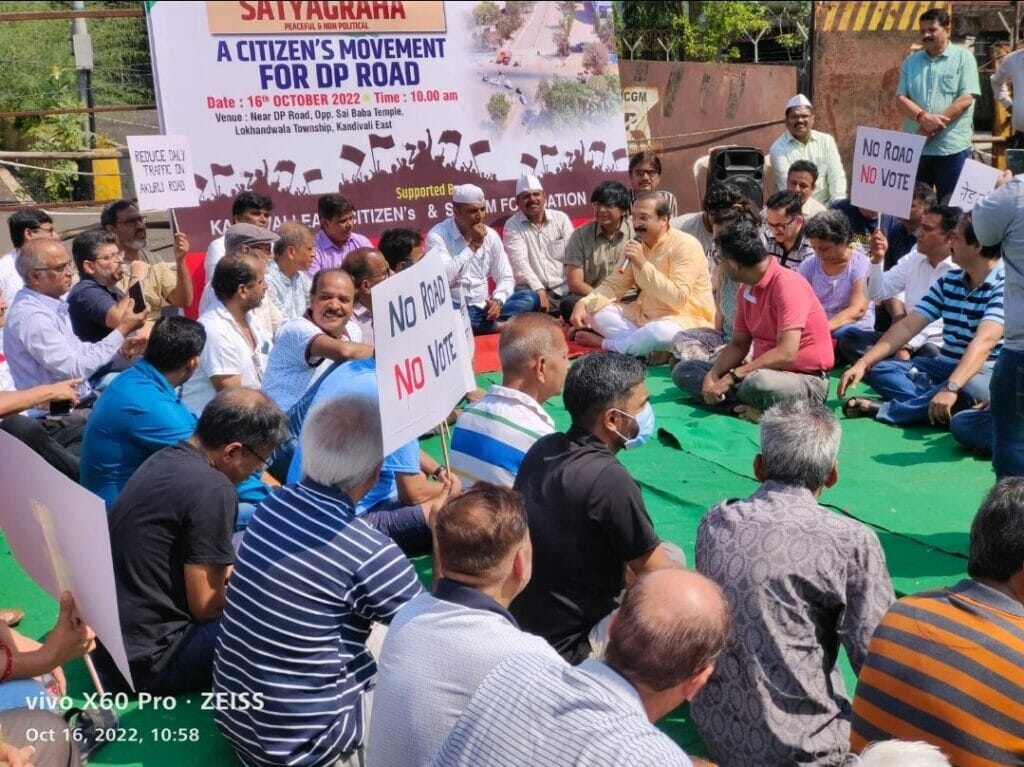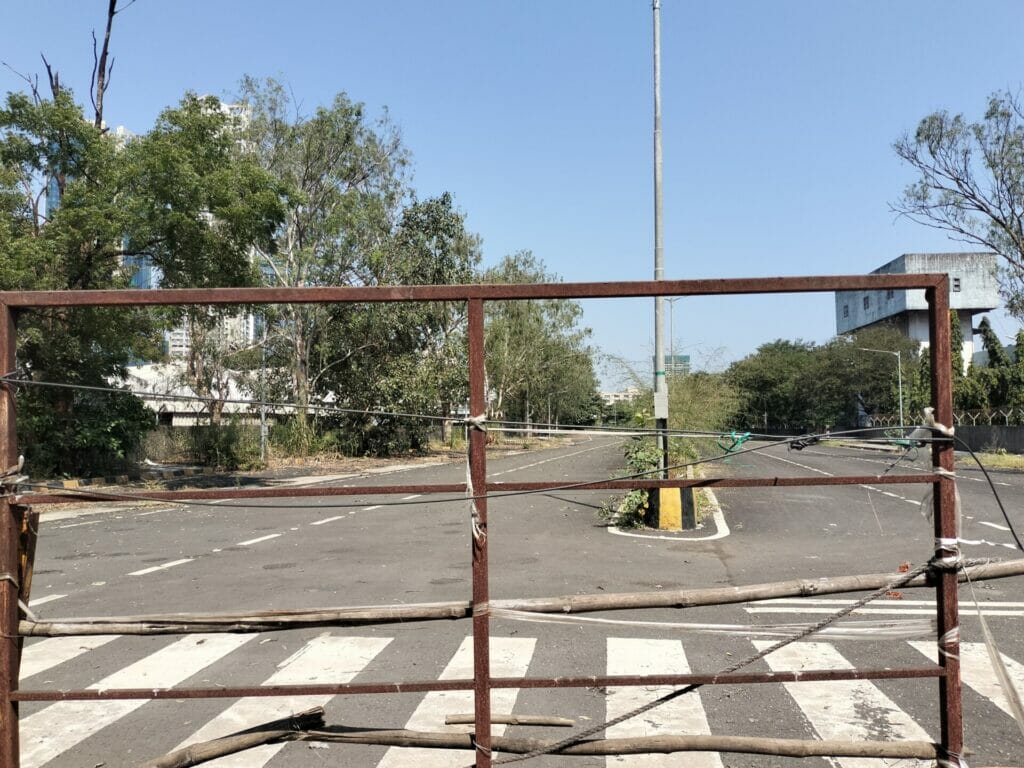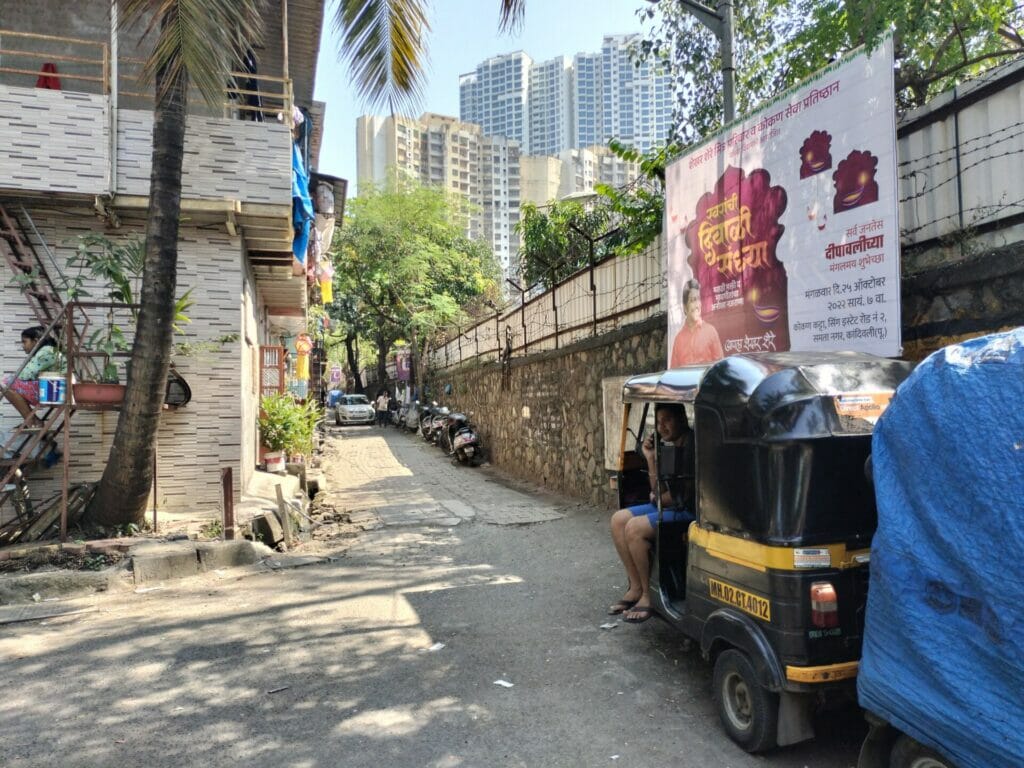The traffic on Akurli road, Kandivali, is not news. It is the main access road to all of Kandivali East, beginning at Kandivali railway station. From there, it passes Growel’s mall, cuts through the Western Express Highway (WEH), going on to Hanuman Nagar, Lokhandwala, Damu Nagar and Gautam Nagar, stopping only at the green expanse of Sanjay Gandhi National Park (SGNP).
Despite the heavy traffic it has to carry, the road is just 90 feet wide. Shops and parked vehicles on either side further squeeze it, and many lanes intersect it linking the areas along the way.
Complaints have been raging for over a decade, and Nitin Jha, an RTI activist and resident of Lokhandwala Township corroborates this.
“At peak hours, it takes one and a half hours to cross this 1-km stretch,” he says, pointing to the street that connects the Lokhandwala township to Akurli road – the only way out. “And then we have to face the traffic on the highway.”
Continuing a tradition of campaigns, protests and petitions going strong since 2016, Nitin organised a satyagraha to protest the traffic on October 16th. Around 300 residents of Lokhandwala participated holding placards of “Reduce daily traffic on Akurli road,” and “No road, no vote.”

Road plans
Akurli road is similar to others in the city – constrained by size and affected by traffic violations. Auto rickshaws and buses stop mid-way to pick up and drop off passengers; the gaps in physical dividers see ad hoc u-turns and vehicles spilling over to the wrong side of the road in a bid to get ahead; the lack of signals at crossroads leads to bottlenecks; the narrow footpaths bring pedestrians on the roads. The atmosphere is one of frantic starts and stops, edginess and the constant blaring of horns.
These factors create the constant need for traffic police to ensure the smooth flow of traffic, standing in for the absent traffic signals.
“There used to be very few people here. Now the population has increased, and along with it the number of vehicles. But the road has stayed the same,” said one of the officers on duty. “So of course, there will be traffic.”
None of this comes as a surprise. The Development Plan (DP) for the city anticipated this in 1991, just as the population in the suburbs was beginning to blow up. It made provisions for a 120-feet wide road going all the way to Dindoshi, Goregaon, which Nitin calls “a parallel link road in the east.”
30 years since, land acquisition troubles have meant that the road is far from being a reality.
In 2018, however, things seemed to take a step ahead. “Due to my consistent efforts since last three years,” tweeted MLA Atul Bhatkhalkar, “today ‘Mahindra & Mahindra’ has handed over this required land for the road.”
The Brihanmumbai Municipal Corporation (BMC) made quick work of the land, connecting the entrance of Lokhandwala to Thakur Village. All that was left now was for the stretch of the road to be opened to the public. It was and is barricaded at the opening and enclosed by the Mahindra & Mahindra company’s wall at the end. But as the years have gone by, the replies to Atul’s tweet match the outlook of the residents, going from congratulatory and thankful, to questioning and despondent.
One of the latest replies, from October 2022, asks, “Will this road be ever completed?”

Read more: Is it possible to make changes to the Coastal Road Project at this stage?
An alternative road for better traffic movement
According to Nitin, only 20% of the road laid out in the DP has been constructed. For any further headway, over 4,000 residents in informal settlements will need rehabilitation – a lengthy process that has dragged its feet till now and will continue to.
For now, he has a solution that might temporarily ease the traffic problems of the Lokhandwala township. By opening up the part of the DP road constructed, he contends, an alternative route will open up for the residents.

“There is a 30-foot road behind that wall. If it’s taken down, a one-way road can be accessible,” says Nitin. The traffic – diverted away from Akurli road – would lead Lokhandwala residents to Thakur Village and beyond.
The other side of the wall
In space-strapped Mumbai, however, solutions are rarely so simple. Multiple claims to spaces are commonplace.
In this case, the Mahindra & Mahindra wall overlooks around 300 legal informal settlement houses. The residents have been living there for 40 years, since decades before the Lokhandwala Township rose to its heights.
“There is barely space for us at peak times,” objects Ranjan Mhaskar, a resident. The narrow road, sandwiched behind the wall and their houses, is barely wide enough for a car, and with the rickshaws that ply the lanes in the evening, a new set of people cruising through them would mean yet another neighbourhood jammed.
Ranjan also lists safety concerns against taking down the wall. Unprotected by gated communities and watchmen, the houses at the perimeter with doors facing outward could be a magnet for thieves and the like.
These families have been due for rehabilitation for a long time, but that conversation, they say, has been stuck. When they were last offered to be shifted to Chembur or Mahul, there were only unanimous objections.
“They have a right too. They’ve been living here for the past 40 years. Why should they shift to Chembur?” asks Nitin, sympathetic to their plight. But he also maintains the situation is politically gridlocked. The two sides on either side of the wall fall in different constituencies; the MLA of Lokhandwala is the aforementioned Atul Bhatkhalkar (BJP), whereas Singh Estate, home to the 300-odd informal settlement houses, comes under MLA Prakash Surve (Shiv Sena, Shinde faction).
Manojkumar Patil, husband to Corporator of the R/South ward, Surekha Patil, who has long been involved in the issue, agrees. He speaks of a meeting held five months ago with stakeholders from the BMC and the state government, which ended on the condition of rehabilitation to a nearby location. “When they move, the road will be opened,” he said, adding that efforts are on to speed up the process to gain favour in the forthcoming BMC elections. Nevertheless, it is unlikely that it will all transpire within the year.
Still unlucky, Nitin’s plea to the Corporator, municipal commissioner and MLA has not had any favourable responses. Not one to give up, however, he plans to hold a highway chakka jam soon.